Over time, the plane trees in Waterschei have grown large and started producing excess leaf waste remarkable for their plasticity and slow decomposition. This has created a maintenance issue for the residents, especially those of the older generations. Eventually, it provoked groups of residents to organise calls for the trees to be removed, leading the city to approve their cutting in 2016. Other residents and activists confronted this decision with petitions and protests to save the trees. Due to increased politicisation of the tree debate by media and on social networks, the maintenance issue escalated into a polarising discussion in the neighbourhood.
In 2017, the city reversed their decision on cutting and started a long-term participatory study to involve a larger number of residents in deciding the future of the trees. In this trajectory, residents-activists argued that the trees were important for many different reasons: they retain water, clean the air, support biodiversity, provide shade, etc. The heritage-development experts, on the other hand, emphasised the heritage value of trees as a key argument for their preservation. This dissonance between perceiving the trees as complex ecologies and as heritage elements created a new layer in the discussion, revealing the complexities of landscape maintenance and management, which become increasingly relevant in times of climate crisis.
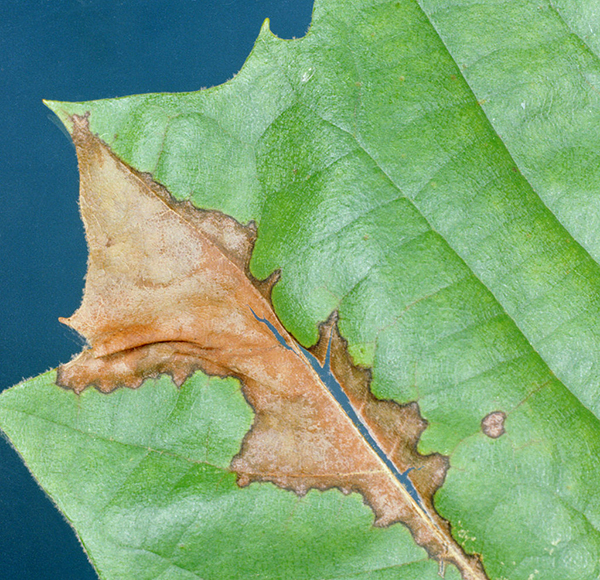
Local residents indicated that the plane trees lose some leaves already in June. This indicates an infestation by the leaf fungus Apiognomonia Veneta. This damage is almost always temporary. Recovery occurs as the trees form new leaves in July. (Rapport: Veiligheidsinspectie Platanen. Tuinwijk Waterschei Genk. 2019. Image credit: Clemson University, CC BY 3.0, via Wikimedia Commons).
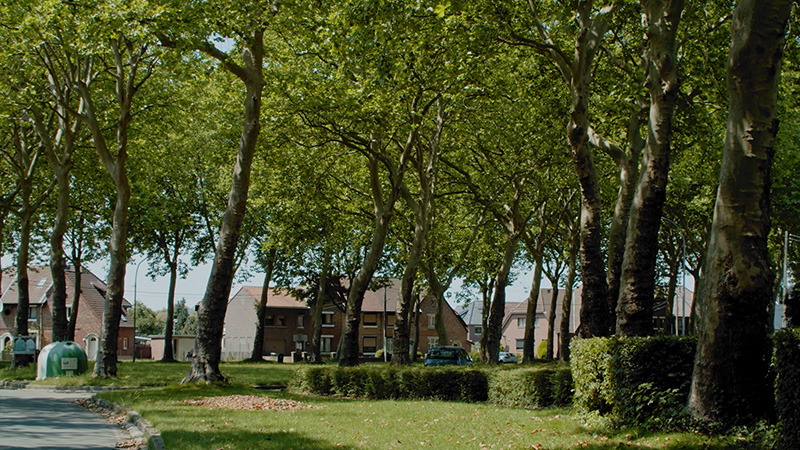
Transition Landscape Atlas. 2022. Video still showing the plane trees in the Waterschei garden city.
“It is 2020, everyone knows how important greenery is. The trees provide a lot of shade, which is invaluable, especially when the temperature outside is very high. The combination of the shade with the thickness of the walls of the old houses makes Waterschei very livable in terms of temperature.”
Luc, neighbourhood manager, Waterschei
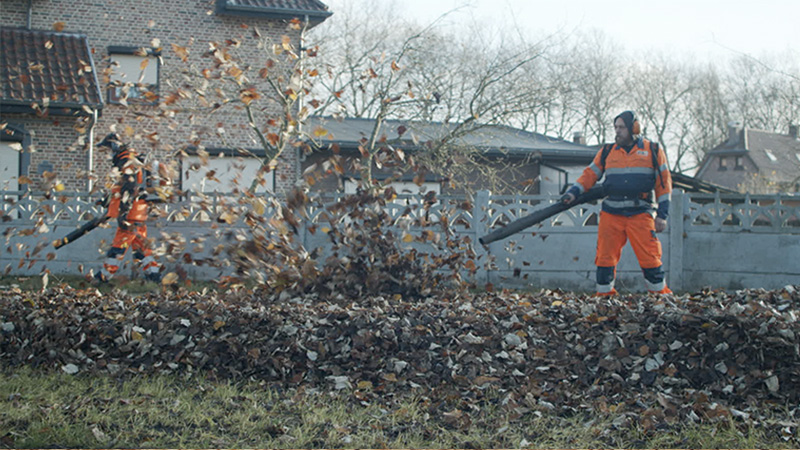
Transition Landscape Atlas. 2022. Video still showing the Green Service (Groen Dienst) workers cleaning the tree leaves in the Waterschei garden city.
“Step one is not making everything beautiful, it's about making it clean! The city tries to make everything look nice, but a lot of work is needed to just keep it clean.”
Fredje, Genk Green Service worker
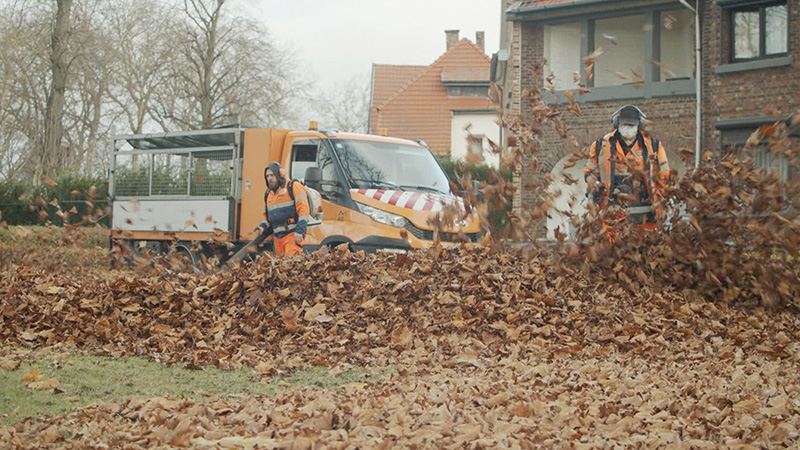
Transition Landscape Atlas. 2022. Video still showing the Green Service (Groen Dienst) workers cleaning the tree leaves in the Waterschei garden city.
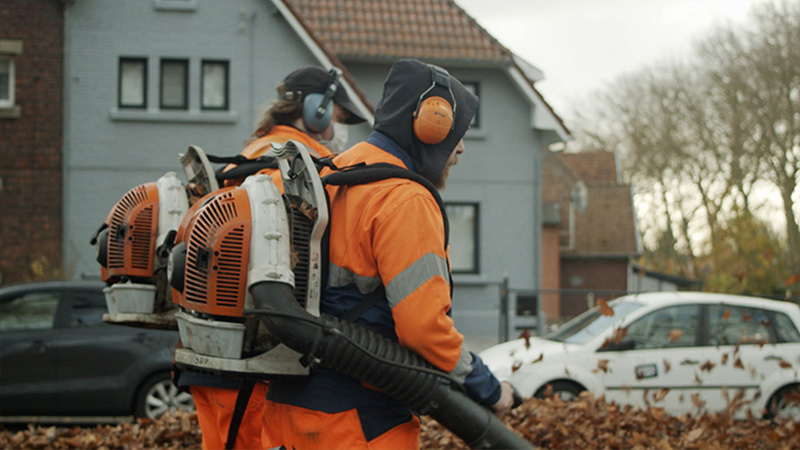
Transition Landscape Atlas. 2022. Video still showing the Green Service (Groen Dienst) workers cleaning the tree leaves in the Waterschei garden city.
Leaf blowers are perceived as a thing that contributes to caring for the landscape, but they are also 'pollution bombs'. See more: www.bloomberg.com/news/articles/2016-11-03/the-case-againstleaf-blowers
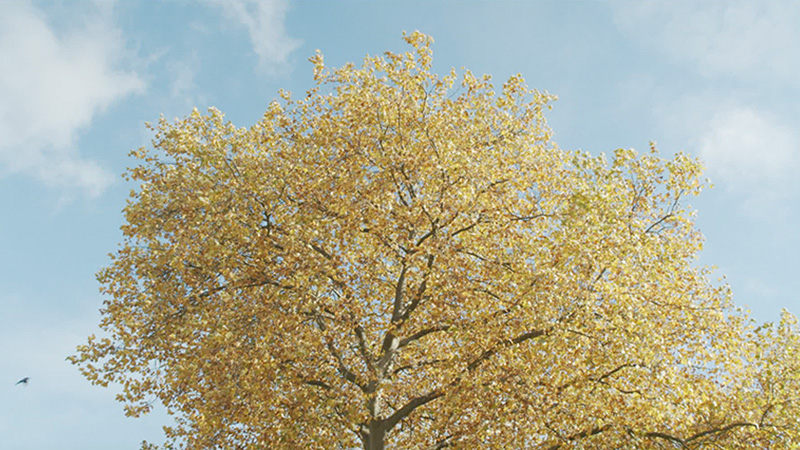
Transition Landscape Atlas. 2022. Video still showing the plane trees in the Waterschei garden city.
“The heritage character of the plane trees was a very important criterion, but especially
for the people from outside the neighbourhood. Most of the people living in the neighbourhood felt
the burdens were too heavy, so they were unwilling or unable to consider the heritage character.”
Katrien, participatory designer, Genk